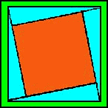
1975 Inverted Frames
In this series of paintings (shown Oct.'75 at the O.K. Harris Gallery, NYC)
each painting began as a 4 by 8 foot construction sheet.
This sheet was coated with a raw color mixed into water putty, then cut into
four (unequal) parts, and re-assambled, such that the original outer edges
are turned to the interior of the painting.
By these geometric translations, the framing edge is turned inside-out.
This series of paintings concerns itself with the shapes that result
from various cutting and translating of the four parts.
copywrite © 1975 by Dan Davidson
In a series of charcoal graphite drawings on paper,
I played with the inherent motion of these geometric tranlations.
And in a series of collages, I invert well know paintings.
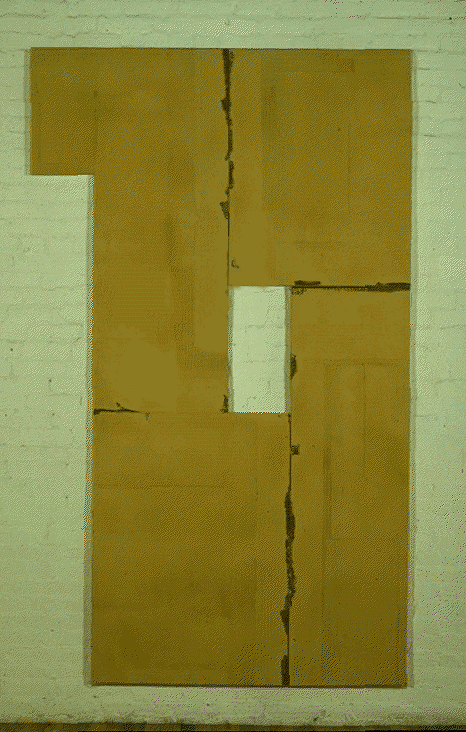
Yellow Rectangle Inverted with Cuts Parallel to the Framing Egdes 1975.
It might seem that the small rectangle jutting off the upper left corner
had come from the "empty" rectangle in the center of the painting since
they are of the same size and proportions. Nor was it simply added on.
For in all of these inversion paintings, no area of the surface was added
or subtracted. The "empty" rectangle is created by the inversion of the
paintings four parts.
(Yes, the white brick wall can be seen through the painting.)
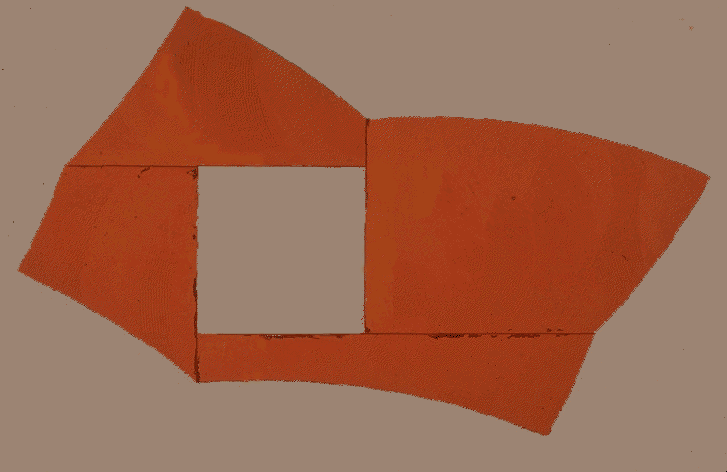
Orange Rectangle Inverted with Cuts from the Arch of the Circle 1975.
The dark horizontal and vertical lines of this painting are made by
the original outer edges as they butt against each other to form this new,
somewhat "winged" shape. The total area of this (and all the other paintings
that have an open space in them) has been increased by that openings area.
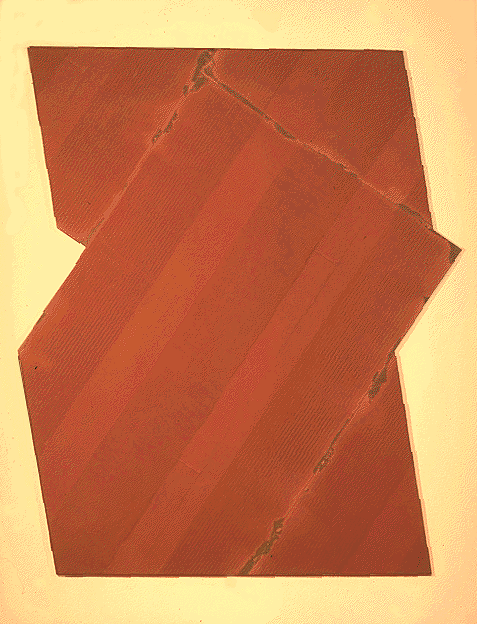
Brown Rectangle Inverted with Cuts that Gain No Area 1975.
The inverted picture frame of this painting is not entirely inside the painting.
The brown water putty is trowled up the length of the 4 by 8 sheet, then cut
into four parts. (The darker brown areas mark the original outer edges.)
This is one of several possible re-arrangements for these parts.
(Try to re-assemble the original 4 by 8 rectangle.)
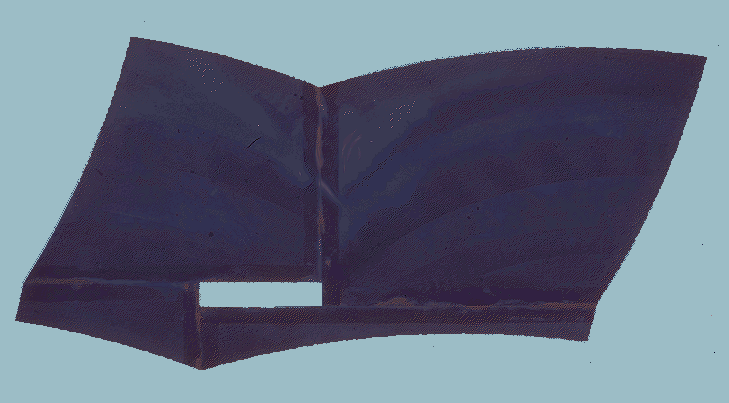
Indigo Blue Rectangle Inverted with Arched Cuts and Small Rectangle 1975.
The original outer edges have all been turned to the inside,
while the arched cuts have become the framing edges of this new shape.
The indigo blue water putty was sweept in archs across the surface, but at the
original edges the putty was swept parallel. Through the inversion translations,
the original edges have remained oriented to the horizontal and vertical axis.
To put the parts back to the original rectangle, in your mind's eye, move the two
top shapes to the bottom, and the two left shapes to the right...the rectangle is back.
And the little horizontal rectangle is gone!
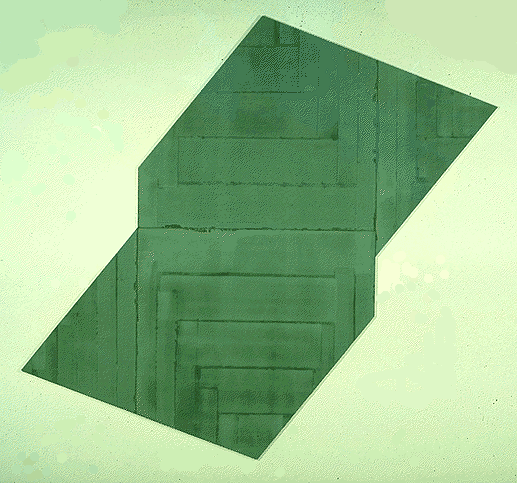
Earth Green Rectangle Inverted 1975.
The earth green water putty is troweled parallel to the original eadges in concentric
rectangles. Though the translation of its parts, the original orientation is held.
No new area is "captured".
To mentally re-arrange, put the left triangle to the right, and the right one to the left.
Then exchange the top shapes for the bottom shapes to bring back the rectangle.
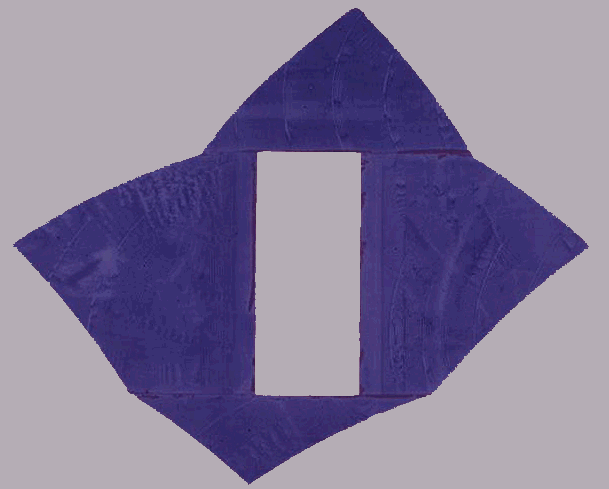
Royal Blue Rectangle Inverted with Cuts from the Arch of the Circle 1975.
This painting and the one below have "captured" the largest interior areas.
While this interior rectangle has remained in the vertical-horizontal axis,
the outer shape has turned to a squarish diamond with concave and convex facetes.
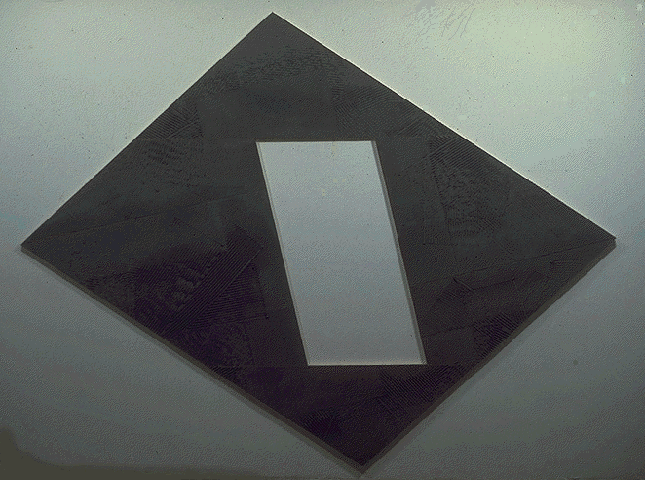
Black Rectangle Inverted with Straight Line Cuts 1975.
Since the straight line cuts do not cross at a right-angles,
upon inversion, the outer shape of this painting reflects the angles precisely.
DANZ ART HOUSE
Resume
1997 Nails & String
1995 The Pythagorean Theorem
1992 In the Company of Men
1990 The Head Game
1970 Perspective Grids








